Poa annua is one of the most common lawn weeds and often goes unnoticed early on when it’s easiest to treat. Follow this guide to Identify Poa annua right away so you can prevent it and get rid of it.
Poa annua, also known as annual bluegrass, is a low growing grassy weed that is commonly found in lawns throughout the United States and beyond. Because Poa annua so closely resembles desirable grass types such as Kentucky Bluegrass, it often goes unidentified until the infestation becomes large.
Poa Annua Identification
Poa annua can be tough to identify, especially in your cool season lawn since it is a cool season grass. It very closely resembles Kentucky bluegrass, however there are some key differences that should help you identify it. One of those key differences is color. Poa annua will usually have a lighter green color that shows up in clumps within the rest of your lawn (see below). The leaves are smooth, and have a boat shape tip at the end.
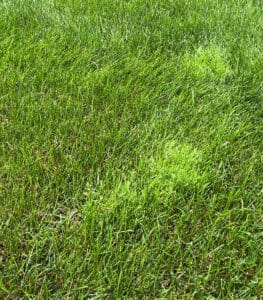
It has a fairly shallow root system so giving it a yank is another good way to identify it. If it pulls up easier than the rest of your lawn it could be a clump of Poa annua.
But perhaps the easiest way to identify Poa annua is by looking at the flowery seed heads that form in late May-June. Your other grass types might flower at this point too, especially Kentucky Bluegrass, but this is where you can clearly see the difference in the flower heads and positively identify Poa annua.
Poa annual has a very thin set of flowers that form outward (horizontal), and are not dense. Kentucky Bluegrass on the other hand has a very dense cluster of flowers that point upward. See below:
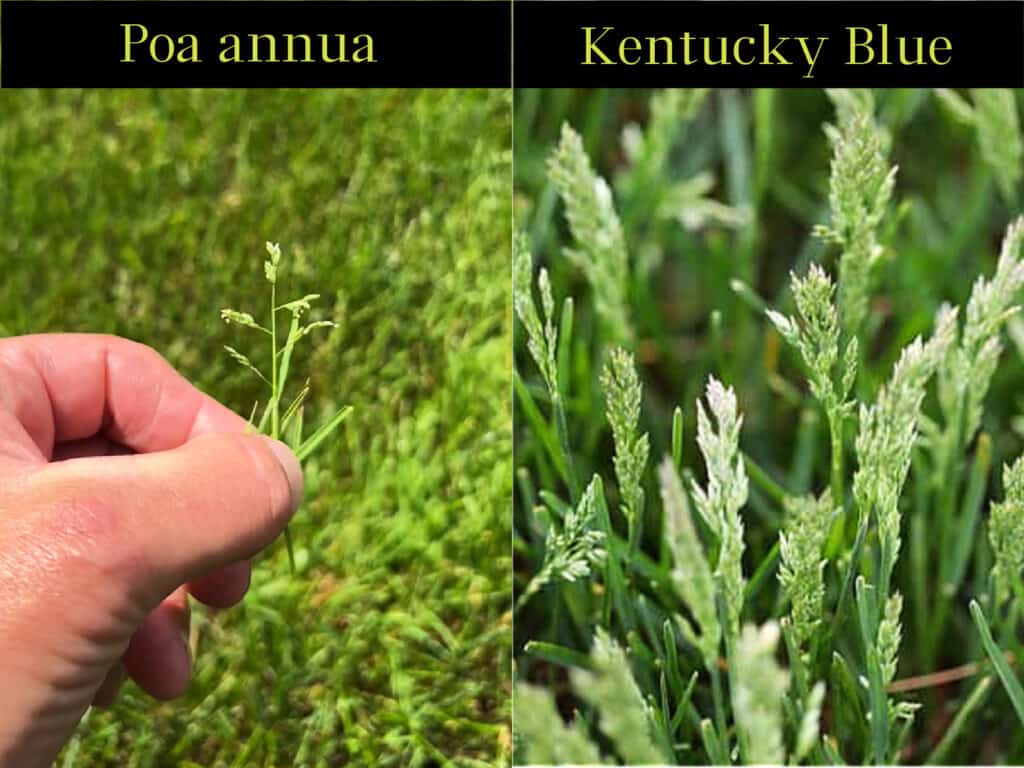
How to Get Rid of Poa Annua
While there are selective, lawn safe herbicides to help knock back existing Poa annua, it’s a lot easier to prevent it. Let’s talk about preventing, and getting rid of Poa annua below:
1. Prevention
Most homeowners who take an interest in lawn care know that in early spring you should apply a pre emergent herbicide to block crabgrass and other annual weeds from growing. But few people know that you should actually apply an additional round of pre emergent herbicides at the end of summer as soil temps head back down to 70 degrees.
This will prevent fall germinating annual weeds from growing, and Poa annua is one of these fall germinating weeds. Fall germinating weeds germinate in late summer/earl fall, and overwinter in your lawn. Then next spring they come out of dormancy with the rest of your lawn and mature.
Applying a pre emergent such as Dithiopyr 0-0-7, or Prodiamine 0-0-7 at the end of summer/early fall (when soil temps head back down to 70 degrees) is so important if you have a lawn with a history of Poa annua. This applies to both cool season and warm season grass types. In fact I recommend applying pre emergent herbicides a total of 3 times during the year in my custom Lawn Care Program.
Overall, using pre emergent herbicides is the most effective and budget friendly way to prevent Poa annua from entering your lawn. But, It’s important to point out one exception. While Poa annua is almost sure to die out during the summer months in warm season lawns, it may not in northern cool season lawns, especially if you irrigate or had a rainy summer with mild temps. This means by fall you could notice Poa annua thriving in your cool season lawn, and next spring it will only get worse. If this is the case, you need to kill the Poa annua using either a selective herbicide for smaller Poa annua problems, or using a non selective herbicide for more serious problems.
If you do notice Poa annua survived the summer heat in your cool season lawn, I recommend killing it off in late summer using the herbicides below (choosing either selective or non selective herbicide) , and top dressing and reseeding the areas where the Poa annua was. And if you go down this road in the fall, then don’t apply a fall pre emergent.
2. Kill Poa annua with Selective Post Emergent Herbicide
For any Poa Annua that gets through your pre emergent barrier, you can choose to spray it with a lawn safe selective herbicide. This will target the Poa annua without harming your grass. It’s important to point out that different herbicides are needed depending on the type of grass you have when trying to target Poa annua. Below are some of the most effect herbicides you can use on Poa Annua.
-For Cool Season Grass
Poa Constrictor- Poa Constrictor (active ingredient Ethofumesate) is a great choice for killing Poa annua in cool season lawns. This product is expensive, but note that it is a concentrate that gets mixed with water so the .75 gallons will last a long time depending on the size of your lawn and Poa annua problem. Always read labels before applying and everything you need to know about mix rates and number of applications, including timing can be found here. This is a concentrate and gets mixed with water and sprayed directly on the Poa annua. I highly recommend using a tank sprayer for application.
Mesotrione- Mesotrione is a very versatile herbicide that can control a large number of weeds in cool season lawns. Mesotrione is found in a product called Tenacity, but recently, cheaper generic versions have come out such as Meso 4 SC. Interestingly, Mesotrione is not labeled to control Poa annua, but it is known to have been effective in knocking back Poa annua with repeat applications. In fact this is how I control Poa Annua in my law as you can see in the video below:
-For Bermuda and Zoysia Grass
Negate 37 WG- Negate 37WG(Active ingreident Metsulfuron Methyl) is a great choice for killing Poa annua in Bermuda and Zoysia Grass. This product is a concentrate and gets mixed with water and sprayed directly on the Poa annua. I highly recommend using a tank sprayer for application. Follow the label for application rates and timing.
-For St. Augustine and Centipede Grass
Atrazine- Atrazine is a great herbicide for controlling a long list of lawn weeds, including Poa annua. It is a safe to use on St. Augustine and Centipede Grass. It works a little on the slow side when used to control Poa annua, but it will eventually do the job. Follow the label for application rates and timing. This product is a concentrate and gets mixed with water and sprayed directly on the Poa annua. I highly recommend using a tank sprayer for application
3. Kill Poa annua with Non Selective Post Emergent Herbicide
Using a non selective post emergent herbicide is one of the most effective ways to kill Poa annua. Just note, by ‘non selective’, we are referring to an herbicide that will kill any grass it comes into contact with. Unlike lawn safe herbicides that target just the weed, this will cause damage to your lawn in addition to the weed. If you go down this road, just know that you’ll have dead spots wherever you spray the herbicide so do your best to just target the patches of Poa annua. And since the nearby grass will be killed too, be prepared to reseed, or sod, the damaged areas.
Going with a non selective herbicide such as Roundup is the way to go if you have a pretty serious Poa annua problem. Spray the Poa annua in late summer leading up to the ideal seeding window which is when soil temps head down to 70 degrees. Once you’re left with a bunch of dead patches after spraying the Roundup you can top dress those aeras with compost or quality loam and then reseed.
4. Manual Removal
Don’t underestimate the effectiveness of manually removing Poa annua, especially if you just have some small patches. Use an edging shovel to dig out poa annua sections in neat squares. After removal, fill in the bare spots with sod, or top dress with compost or loam, and add seed.
Repair Lawn
The big questions is do you have to reseed your lawn in areas where you killed Poa annua? It really depends. For smaller patches, I’ve had success with my lawn naturally filling in the bare areas, especially since I have Kentucky Bluegrass which is a great spreader. But if you’re left with larger bare sections after killing off Poa anna, I’d recommend top dressing those areas with compost or loam, and reseeding. Just note that you don’t want to put a pre emergent down if seeding, unless you use Mesotione as a pre emergent (for cool season lawns). That’s right, Mesotrione can be used as a pre emergent as well as a post emergent in cool season lawns. I talk all about here.
Warm season lawns are usually great spreaders so those smaller patches should fill in nicely. If not consider using sod or plugs to fill in bare patches on your warm season lawn.
Check Out These Posts Next
Follow Me
Join my free email list!


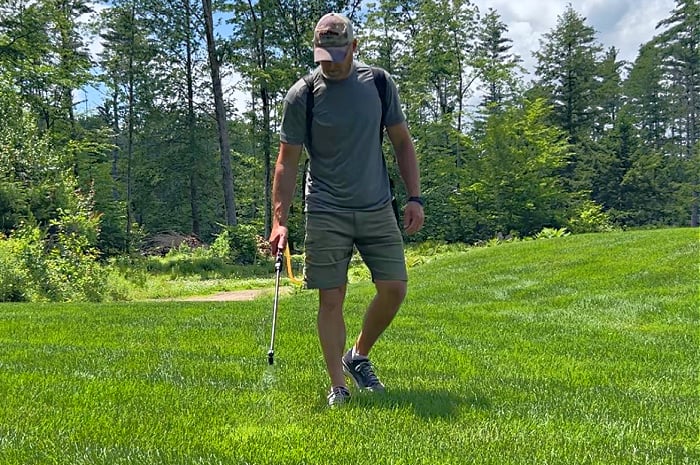
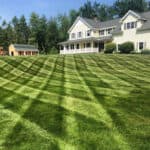
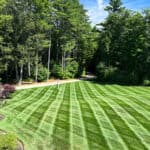

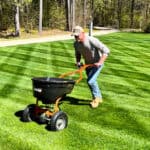
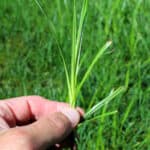
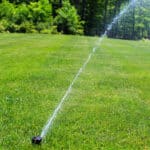
Thanks for the information and could you recommend something to get rid of goosegrass and bahia grass.
For Goosegrass use Sulfentrazone, and for Bahiagrass you can use Quali Pro MSM Turf. Also know that for the Goosegrass using a pre emergent herbicide like Prodimaine as soil temps hit 55 degrees in Spring, and then again as soil temps his 65 degrees in spring will help prevent it from growing.